olive tree bonsai for sale
 Olive (Olea europaea) - Bonsai Empire
Olive (Olea europaea) - Bonsai EmpireJavaScript seems to be disabled in your browser. For the best experience on our site, be sure to enable Javascript in your browser. The Tree of Olive as the Heart of Bonsai of the MEDITERRANEAN - THE OLVIC TREE Before the cheap airways very few of us in Blighty would have been able to identify an olive tree. Today, most people with a small interest in arboculture matters will tell stories of being impressed by the ancient olive trees of some exotic mediterranean destination. Most of the garden centers now have a wide variety of olive plants ranging from small chunky cuts to huge old full-size trees. In the bonsai circles of good quality the Yamadori olive trees have been practically unreachable until recently.... but who would have the heart to remove a beautiful olive from his sun kissed home on some romantic foreign shore and brought it back to suffer the rigorous of a dark humid English winter? Ideal of separate silencing, it is testament to the adaptability and robustness of the olive that, despite what you may have read, grows very well here assuming that you start with the proper variety and provides for the simple needs of the plant. Before going further, please let me point out that what follows is based on my own practical experience of cultivating olive trees as bonsai in the United Kingdom. It's almost twenty years since I bought my first olive and it's still good in the hands of a friend of ours. I live on the Norfolk/Suffolk border just 4 miles from the sea. Here time is quite smooth. Spring time is usually a little cooler than many places, but autumn time is warmer. Winter nights are usually a few degrees warmer than more indoor thanks to the warming effect of the sea. We are in what is called a rain shadow area, so the weather is perhaps a little dryer than most of the UK on average. There is a myth in the bonsai circles that the olive trees are not resistant to frosts. This seems to be the main concern I have found in talking to people about this species and much of the reason to avoid olives. Sadly, the Internet is linked with misinformation based on rumors, conjectures and preconceptions. I've seen more than one source stating that olives are not resistant to frosts but make Bonsai ideal inside. "Google" olives and you'll get about 6.6 million visits. It won't take you long to find out that these plants are really hard... Very hard! By its nature, the process of creating bonsai is stressful on any plant. A small element of stress is a good thing in life and cultivating plants in pots strength a certain level of restricted growth. Bonsai is the process and ability to direct and manage that growth, and few trees lend themselves to the process better than the olive tree. From a bare trunk to a bonsai tree of quality exposure in no more than ten years is a feat that some other species can boast. I have achieved this feat several times, we never have less than thirty olives in our nursery and all of these are being cultivated and continually developed as bonsai. As a result, I can say with confidence that what follows works! Oleaster collected in Sicily and developed over 8/9 years. Wild olive from SicilySamo olives a couple of years later Children 10 years old Taxonomy - Olea is a genus of approximately 20 species in the Oleaceae family, native to temperate and tropical warm regions of southern Europe, Africa, South Asia and Australasia. They are always green trees and bushes, with small, opposite, whole leaves. The fruit is called a breakage. There are literally hundreds of olive growers. Like apples, trees with different fruit characteristics have developed over hundreds of years. The species is very variable and there are no two trees that seem to be the same. As for bonsai, we will find three main groups where foliage is the defining characteristic. Oleaster, wild olives whose cultivation "Olivastro" is used as rootstock for O. europaea; previously classified as the O. europaea oleaster subspecies. By far the best type for bonsai cultivation. Small leaves, grown vertical, when mature. Good examples will have spectacular bark and natural dead wood. Generally collected from nature in expensive regions. Unusually for an oleaster-like dwarf foliage is extremely vigorous and indulgent. More expensive, but this is the one to buy! Olea sylvestris, a small wild olive fruit from the Mediterranean region. bright leaves of medium dark green size generally more rounded than the oleaster. The habit of cultivating the lover. More susceptible to fungal problems in very humid conditions than the oleaster. Growth slower than the oleaster, but carefully can produce a very impressive bonsai tree. Olea europaea, the primary type of olive cultivated for fruit production. Most come from old olive groves. Big oblong grey leaves, very loose habit. Tolerant of most conditions. Good quality bark is rare with this guy. Large cheap trees are often available in general nurseries and garden centers. In the United Kingdom this type is very poor, usually showing weak growth and susceptible to fungal probelmes such as the place of peacock and infestation of particularly insect-scale pests. Very difficult to produce dense foliage masses without a very strong sustained sun. Best avoided for bonsai use in the UK. L.R. - comparison of oleaster-sylvestris-European leaves. Like apples that grow olives of seeds will produce some mutt. Just because you took seed from a particular plant with characteristics that you liked doesn't mean that you will come true of the seed. The only sure way to get features you like is to use one of the main methods of tissue propagation such as cuts, layers, division and redness/graft. The cuts involve rooting a cut piece of the matrix plant; the layer consists of rooting a part of the father and then spreading it; and sprouting and grafting are joined to two parts of plants of different varieties. When the bonsai is concerned much of the required success with the olive is about selecting a good plant to start. As a general rule, the lower the fastest blade will be the growth rate and the best foliage density it will achieve. If you're starting with an almost naked skeleton, good growth rate is important. If an olive tree has large leaves at first, unlike most of the broad leaf varieties, it is all less impossible to reduce the size of the leaf over time without seriously undermining the growth rate and therefore development as bonsai. So selecting a good strong olive with small leaf and a dense habit in the beginning will make life much easier in the long term. One of the great features of the Yamadori olive is the quality of the bark. Young olives are typically mild and it is extremely rare for this to start improving, even for decades. If you want a good character bark to buy a tree that already has it or you will be very old before a soft bark tree begins to develop it. Obviously it does not say that you should buy from a reputable source where the plants have been lifted with appropriate permissions and have been duly established for a minimum of two or three years before sale. OLVIVAS DE BONSAI IN THE UK My experience of cultivating this tree for decades has been very rewarding. Olives are a tree that really "vagabonds" to grow. All we have to do is create adequate conditions. Despite the difference between its natural habitat and the United Kingdom will be adapted and established in life here within a year or two. There are a few tricks you will need to know to get the best of olives here and many of the techniques adopted within the natural range of olives will simply not work in Blighty. Olives & The Cold - The elephant in the room in terms of olives and the UK always seems to be the theme of the hardness of frosts. As already said, the cold is not our worst enemy. The big problem is the combination of cold and wet. The effects of which can be too much for these big trees to handle. As they say "the secret is on the ground." The heavy wet cold soil will be the undoing of this species. Traveling through Spain, Italy and to the point of Cyprus I have seen the olives cultivated in a fibrous medium of peat, perlite, multipurpose and similar compost. In these areas with summer temperatures it is important. The roots in a pot on the ground are subject to temperatures much higher than those planted on the ground. Olives in these areas often need to be watered several times a day to avoid excess drying and a wet root system will be much cooler than a dry one that largely explains the success of what Blighty might consider a bonsai soil of very poor quality. In the UK we don't see the temperatures of 'cut', but we do see long, cold and miserable wet and dark winters and a mixture of fibrous soil seems to have the ability to transfer cold to a plant with efficiency 'chilling'. Therefore in the United Kingdom we need to have an open and very free medium of cultivation, summer irrigation is not really a problem due to a resistance to the drought of olives. But, that free drainage mix will help preserve the roots of the trees during the winter. The drip of the soil better resistance to the cold. Think about it like this... in the depths of a cold winter puts a big bath towel out of the night in the morning in the concrete and soak it in the water. In the morning place a dry towel on the floor next to the wet. Next support in the towel wet in bare feet for a while before going to dry, both will be cold but what is worse? It is quite reasonable to expect that an olive on dry soil resists night temperatures of less than 10-14 Celsius however an olive on wet soil will suffer seriously at only 2 Celsius. Obviously, when the sustained lows are expected to pop an olive in an open greenhouse, without heating or supporting it under the bench to allow the top cover but avoid dark sheds or closed areas such as garages or chests, the olives need a good ventilation all the time. Keeping a dry olive in winter not only helps in relation to the protection against the cold, but will also preserve that valuable bark of piggy and also any significant dead wood. The trees that are oversorted in the dry will grow much more strongly in summer, as the roots will emerge in spring in much better conditions. In short, worry more about the cold and less about the cold, especially if your olive is planted in less than ideal soil. Growing up the media " Repotting Olives as Bonsai - As already noted, to succeed with the olive we will have to structure our soil properly and in the UK this will be completely different from what can be required in the warmest cites. With years I have experienced everything commonly available and I mean it. I know everyone in bonsai likes to do their own thing and a lot of effort is spent on "reinventing the wheel" constantly. Save yourself the problem, the pain and the expense, which works is extremely simple and we have proven that it works on literally hundreds of olives for almost twenty years. Olives have a relatively poor root system but although there are few roots that are extremely efficient in doing the job. Olives produce root of any living tissue that touches the soil but unlike many varieties used in bonsai it is rare to see an olive in a pot binding condition. Over time rootball may seem to be compacted, but this is most likely due to the growing degradation of the media as it is the excess growth of the root. Because of this re-potting it does not need to be particularly frequent. Re-potting is more likely to be needed to get a suitable culture environment for roots, eliminating the media and inappropriate growing fields in which Yamadori is located. However only because a soil is less than ideal doesn't mean we have to change it. Where a tree is in less of the struggle with proper conditions to change the ground can cause more than a probe than we expect it to be fixed. In that case much better manage the soil carefully and leave the olive in situ until your health improves. Deciding when to reposition an olive is very similar to any other bonsai tree, it is not made based on a preferred time frame or time frame but it is relative to the growth of trees and health in the previous seasons. Like all bonsai, olives look very well in a small bonsai pots, however a small bonsai pot is quite designed to slow down the growth rate to allow the creation of a beautiful refinement. Putting a tree in a bonsai pot does not make it a bonsai tree. The olive trees will feel trapped in a small pot and assuming that you are in the process of developing material towards the ultimate goal of creating a bonsai tree to save the small pots later, MUCH later. Keeping olives in deeper pots will significantly improve their growth rate and therefore development. In larger pots with more soil volume and larger root masses can often be left for five or even ten years. As long as the tree is producing a good growth that shows no signs of slowing from season to season do not even consider re-potting. If you have to put an olive back the only time to do this is mid-summer. I know it flies in the face of almost everything written about bonsai but it works. I have found olives re-potted in spring tend to produce poor later growth in that year and then return to normal in the following year. Why lose a growth of years? We usually choose a heat period between mid-June and mid-July. In the south this may need to advance a week and in the north you may have to wait a little longer. At this time of year it is easy to dry the ground a little what makes the task much easier. As long as the tree has made significant growth it can be re-potting. Do not priune growth before re-potting the tree needs all the leaf mass it can get. It stretches the ground but only the roots of the plum if there are too many to return to the pot, as I said the olives rarely produce huge masses of root. We no longer wash the root system of the trees, we only work slowly and choose the old soil with a peak. Once the tree is returned to the pot with its new media water of deep growth and place the tree out of the wind in FULL SUN. He hopes that soft shoots will wither a couple of days before rising and growing like nothing happened. Once these soft shoots collect the tree is developing new roots and can be put back in its normal place. He never put bonsai re-potted in the shadow but shelter DO of the wind. Plants get the energy they need from the sun, the shadow will damage recovery. Incorporating into their growing media will significantly improve recovery after re-potting. As to which soil, or means of cultivation, using the choice is quite simple. Before you enter into details, an example of what happens when wrong can be of value... Offering photo of 20132017 finally back on track I bought this olive in Spain in 2013. When the tree arrived, it was planted in the Akadama rectum. Well rooted the tree had obviously been in a pot for some time and so my plan was to leave it in situ and only work with the new growth as it arose. The next summer the tree fell a lot of old leaf and produced no significant growth. I put this to the change of landscape, continued to give the tree the care that it needed and hoped things would improve the following year that they could not do. I've had olives to sleep like this before and I don't have an answer as to why. So by now the tree looked much worse than what I had bought, with very few leaves and a lot of twigs die. In mid-summer 2016 everything was getting worse so in July I pulled the tree out of its pot, it was planted in a very fine soft akadama that was obviously too dense and wet not to mention too much acid for good nutrient absorption. I cleaned this old ground completely. There was very little root so what I had returned to the pot along with a mixture of ours and a small amount of . The tree was treated exacly as detailed above. In four weeks I had 10" again growth. For the summers my olive had produced more than two feet of new growth with profuse outbreak everywhere. The same growth rate continued during the summer of 2017 and now, finally, the tree is back on track. Getting a olive root system and the right of the ground is important for success in bonsai. Means of cultivation suitable for olive bonsai in the UK - Any medium of cultivation should be alkaline, olives grow naturally on limestone. Large volumes of Moler / cat litter or akadama are a non-defined. It is always important to have a clay element in any growing medium to have a good exchange capacity of cationes (CEC), that is, the ability of soils to unite nutrients for the plant. However, too much clay means less drainage and many clay products tend to be on the acid side, especially Japanese volcanic products. Using Moler, it has a very high CEC and is freezing test and will not degrade over time. I have used in small quantities, this is good to promote fungal and bacterial activity. The most important element in the composition of the olive floor is the pumice. This has to be limestone that should be carefully qualified with similar particle size throughout 3-8mm for smaller pots and in the 7-13mm range is ideal. Very small pots may need a slightly smaller particle size to avoid excess drying of the pipe in summer. What we have now established is - Fomulation of soil for the cultivation of bonsai of the United Kingdom80% Pumice grade - 10% Clay of moler - 10% bark of clean pine. Finally add a good handful of Our bonsai land of olive in situ. Fertilizers for Olives Bones - There are older adoquins talking about fertilizers or 'feeling' in bonsai circles than almost any other aspect of cultivating bonsai. The term "feel" is, at best, a misnomer. Created by greedy marketing men leads us to the conclusion that a plant consumes food as a pet and how cruel we would be to retain the food of our pets. It also suggests that to grow a plant well it needs a lot of food and that a plant that does not grow well needs a good diet. The theme is that this leads to a very serious misunderstood of the role of fertilizers in bonsai. Customers don't eat food. Plants are the SOLO organism on earth that makes its own food of sunlight, water and carbon dioxide. All life on earth depends entirely on plants for energy. All the energy on earth comes from the sun, but only plants can take advantage of it and turn it into a source of energy. Oil and coal store the energy enclosed by the plants long ago, no euqal plants not oil, no plant equals any herbivores and any Big Macs. In order to create energy from solar light plants, use carbon dioxide, water and ultra violet light to create carbohydrates. This is achieved in a small molecule that we call chlorophyll, which is green and absorbs the light very efficient. Chlorophyll molecules are organized within a photographic system whose final function is the separation of load, which leads to biosynthesis *1. To maintain that the structure plants need some stem elements they cannot manufacture in the form of elements such as nitrogen, phosphorus and iron. When a plant is growing in a restricted soil volume, a certain form of artificial nutrient replenishment is required to ensure sustained growth of strangulation. If the nutrients are the restored chlorophyll starts to lose its green color that normally appears as yellowish of the leaf. Chlorophyll in this state does not produce energy in an efficient way and our plant will weaken if the situation is not addressed and that is where the fertilizer enters to play. Despite growing in impoverished soil in nature, olive trees in cultivation appreciate a regular fertilization program. If the detailed soil mixture above is used it is important to use some organic fertilizer for both the tree and the bacterial and fungal elements within the soil. Now I no longer use chemical fertilizers in our nursery, not because of a foolish idea of doing good for environmnet or other PC nonsense, but because I understand how a healthy rhosphere works and while chemicals provide the foundations of what a plant might need do nothing for everyone living there. Forget what you can have read, fertilize bonsai trees and olives in particular is simplicity itself. You can use any high-quality organic fertilizer while incorporating multiple nutrient sources. A product like a single source nutrient. These are good for large numbers (N.P.K) but are light in micronutrients and these are the ones most often missing in the cultivation of bonsai. The product SOLO fertilizer that we now use in ALL our raw material trees to decades of old bonsai trees is . Pioneered by Colin Lewis thirty years ago this product is literally all you need and the application takes only a few seconds each year. Use as it was instructed and don't look back. Green Dream The only fertilizer you need for bonsai and (contains) NO SHIT! Oliva Egg Maintenance - Olives grow rapidly in late spring and summer, in the UK expects to see growth from June and end in late August. Because this growth period is short, it is important to make the most of it. The new growth photosynthesizes very efficiently and thus the excess pruning will weaken, over time, an olive. Because we have little reliable bright sunlight here it is important to allow the new growth to remain in the tree whenever possible. In a good warm summer, the initial flow of growth should be allowed to extend as long as it does. A light plum at the beginning of August should trigger a second eruption assuming time plays ball. In a cold growth of the summer holiday without restrictions until early September. Olives have opposite leaves, when pruning, shorten a suitable point with a clean cut, any strong shoot will produce two new stems from the base of each leaf that remains just below the cut. In this way, an olive will develop a lot of dense twigging while each branch forks two in four in eight and so on. By rotting an olive to build ramification it is important to cut all new shoots at the same time, even if that means just removing the tip itself. Unrunning shots will continue to grow while rotten shoots may not spread. If you need to thicken a particular branch, take advantage of this by pruning everything except the branch you need to enlarge. Don't cut anything in that branch until it's thick enough. 24" growth in 4 weeks Olives have stout shoots Olive shots are easily divided after rotting Olives have a very strong angular growth habit with small stout branches. To shape these for bonsai you will need some degree of wire formation. The wiring made in summer at the same time as the first plum should be set in position in just a few weeks. The olive trees are also very happy to be wired early in the autumn after growth stops but before the frost, ideally in September. The olive trees connected at this time of year must be set in position for August of the following year. Assuming that you can provide winter protection in a cold greenhouse that extends until Christmas is totally safe. Olives have a habit of angular growth, some cables will be needed With the right pruning olives they become dense. Keep the bark of clean olives, algae and moss will quickly destroy the beautiful white color and the bark of decay. This is a simple question of spraying the bark, and dead wood, with, just spray and walk away. In winter keep the olives dry, this will preserve the bark and the deadly wood indefinitely and also help to avoid fungal problems. Keep the bark and the bed of olives clean and dry in winter. Oliva Bonsai sighting - Always keep olives in full sun and a well ventilated or windy place in the garden. Many people have assumed that olives need heat to grow but this is significantly less important than bright light. Olives will not grow well in a poly tunnel because the coating reduces the intensity of the light. An olive placed in full sun outside will grow significantly more in terms of extension and density than a tree placed in a poly tunnel despite the temperature difference. The olive trees will do very well in a glass house that provides the glass is clean and clear. When an olive does not produce good growth, taking into account the previous notes on the ground, the most likely reason is the lack of fierce sunlight and UV exposure. The olive trees are absolutely impermeable to the ventous conditions in fact, it seems that the more exposed they will be happier. The priority number 1 to grow olives in the UK is SUNLIGHT, SUNLIGHT SUNLIGHT. Problems of pests and diseases of olive trees - Assuming olives stay in the full sun with good air circulation and overinvest correctly it will be very unlikely that there are pest problems. Because of our humid climate, the most common problems are probably fungi. During the winter they do not allow the olive leaves to remain wet in a closed space, this is to ask for problems. At the end of September every year we put olives in their winter rooms with top covers. We always wash the storage area with a Jeyes fluid solution and before the trees are bought in the pots they are cleaned, weeds are thrown, and dead leaves are cleaned between the branches and on the surface of the ground. Then we give the whole tree including trunk, bark, dead wood, branches and fuck a complete wash with a super efficient systemic fungicide and pesticide. At the end of spring, when trees are returned to their summer positions we do the same. Following this course of action, it guarantees a free P pestD season. Peacock spot on European Olea. Typically the larger the blade is that an olive is more likely to suffer with fungal problems. Olean European is particularly susceptible to Peacock Spot (Spilocaea oleaginea). Although not fatal for the Peacock Spot tree will result in an increase in the drop of leaf and reduced vitality. The disease is carried in rain and is easily recognizable by small dark points with a pale ring around them on the leaves. The normal solution is to spray with a copper-based fungicide, but these products produce normal blue discoloration. We found Rose Clear Ultra controls this problem cleanly and quickly. Well seen healthy tree should not be bothered by the Peacock point. Sooty mildew is another fungal problem that we have seen and again is easily clarified after the treatment described above. Any fungal problem can almost always be traced back to a poor sighting of the plant and insufficient air circulation and sun exposure. As far as pests are concerned, the only things we have found are scale insects and amp of wool. The scale can be difficult to detect, these live in small brown shells and can typically be found at the bottom of the branches and leaves. Aphid Woolly is quite obvious and both can be eradicated very easily using Rose Clear Ultra. Apart from that, enjoy keeping these fascinating trees, make beautiful bonsai. Folklore and History of Olive Trees - The olive tree has been the symbol of wisdom and peace. The olive tree was the sacred tree of the goddess Athena and Athens, the capital of Greece, took its name from the goddess. Zeus had decreed that the city should be given to the god who offered the most useful gift to the people. Poseidon gave them the horse. Athena hit the ground naked with her spear and caused an olive tree to emerge. The village was so enchanted with the olive that Zeus gave the city to Athena and named it as her. Athena is often shown with an olive branch, a symbol of peace and abundance. At the Ancient Olympic Games, the winners were presented with a simple olive branch cut with a golden knife from a wild olive tree. The Greeks believed that the vitality of the sacred tree was transmitted to the receiver through the branch. Olive oil remains used for medical and religious purposes and has been shown to be an essential ingredient in a healthy diet. As a saturated mono fatty acid, olive oil does not have the same effect of collecting cholesterol from saturated fats. Olive oil is also a good source of antioxidants. Olive oil, unlike seed oils, remains stable in its chemical structure at relatively high temperatures due to its antioxidant and high oleic acid content. *1 - Biosynthesis (also called anabolism) is a multi-step process, enzymatic where the substrates become more complex products in living organisms. In biosynthesis, simple compounds are modified, converted into other compounds, or joined to form macromolecules. This process often consists of metabolic pathways. Some of these biosynthetic pathways are within a single cellular organelle, while others involve enzymes that are within multiple cellular organelles. Examples of these biosynthetic pathways include the production of lipid and nucleotide membrane components. Prerequisite elements for biosynthesis are: precursor compounds, chemical energy (e.g., ATP), and catalytic enzymes that may require coenzymes (e.g., NADH, NADPH). These elements create monomers, building blocks for macromolecules. Some important biological macromolecules include: proteins, which are composed of monomers of amino acids united through peptide bonds, and DNA molecules, which are composed of nucleotides united through phosphorus links. Graham Potter. Kaizen Bonsai Ltd 12/2017InformationShopBonsai Tree Care Information See the trees of GrahamBonsai ServicesPayment Providers Connect with us via our websiteEmail: FREEPHONE buy hotline 0800 4580 672 (UK Only) Continuously Trading Since 1988

Olive tree bonsai care | Bonsaischule Wenddorf

Olive Tree Bonsai - Olea europaea- Buy Online in Singapore at desertcart.sg. ProductId : 60438228.
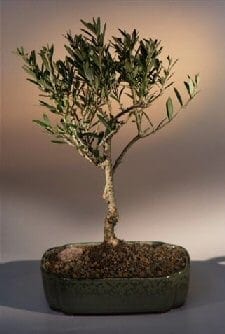
Olive Bonsai Tree For Sale (olea europaea little ollie) | Bonsai Tree Gardener
Olive Bonsai | kuromatsubonsai.com

Bonsai - European Olive Bonsai from EasternLeaf.com; Olive flowering bonsai tree have a strong trunk growth, fine roots, and ability to produce fruit with proper care. Bonsai flowers can tolerate many weather
Olive Bonsai | kuromatsubonsai.com

Olive Bonsai Tree For Sale - bonsai tree

100 Year Old Bonsai Trees For Sale - bonsai tree | Bonsai trees for sale, Bonsai tree, Bonsai fruit tree
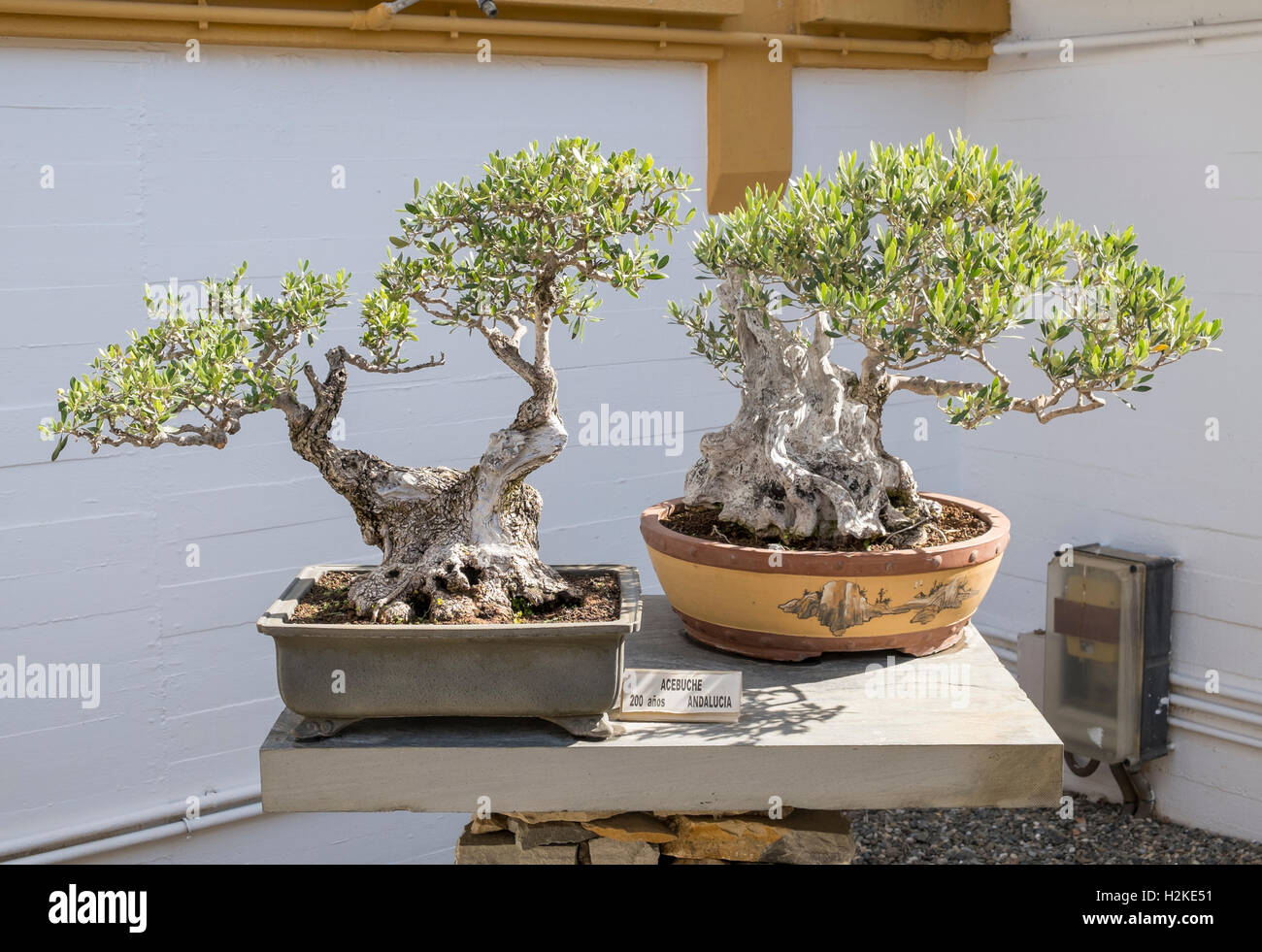
Bonsai Olive High Resolution Stock Photography and Images - Alamy

151 Olive Tree Bonsai Photos - Free & Royalty-Free Stock Photos from Dreamstime
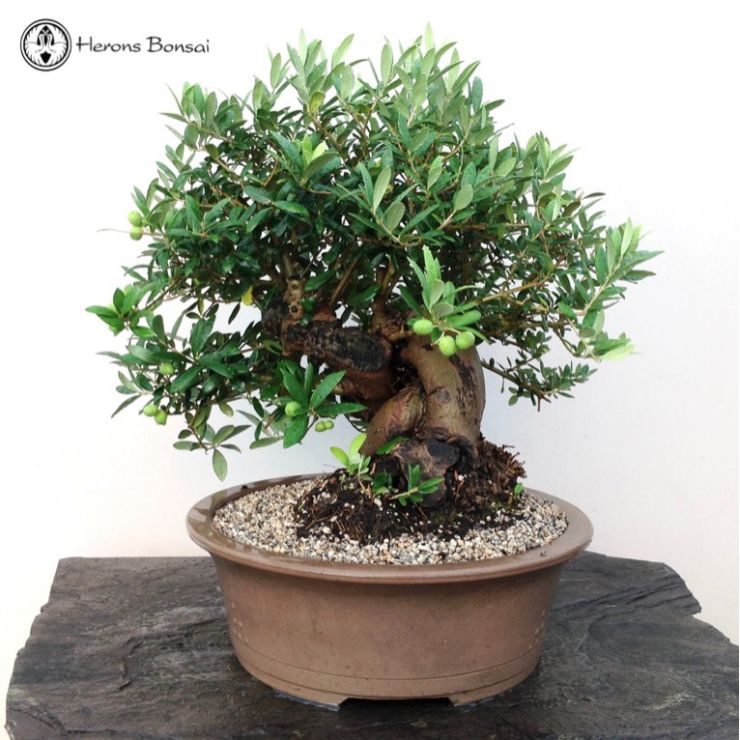
Olive Tree Bonsai Indoor - bonsai tree

Olive Trees Bonsai in Terracotta Container from Palm Farm

Olive Tree Landscaping (Page 1) - Line.17QQ.com

China Indoor Home Decoration Artificial Plant Tree Bonsai Wholesale Artificial Olive Tree on Sale - China Artificial Olive Tree and Artificial Bonsai Plant Tree price
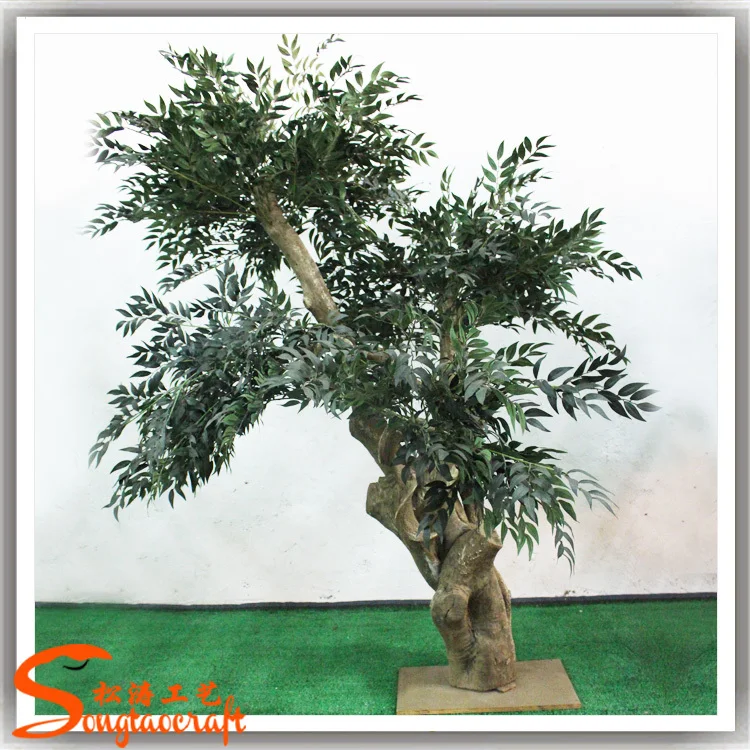
Artificial decorative green olive trees for sale, View olive trees, Songtao-olive trees Product Details from Guangzhou Songtao Artificial Tree Co., Ltd. on Alibaba.com
Giant Bonsai Olive Tree | El Angol Nursery | Sale giant olive bonsai, olive bonsai macro, growing plants and trees, retail and wholesale

Small Bonsai Olive Trees Potted Plants Stock Image - Image of growth, flower: 130170883

Old Olive Tree, Bonsai Tree,,,Sale | Bonsai tree, Bonsai, Tree sale
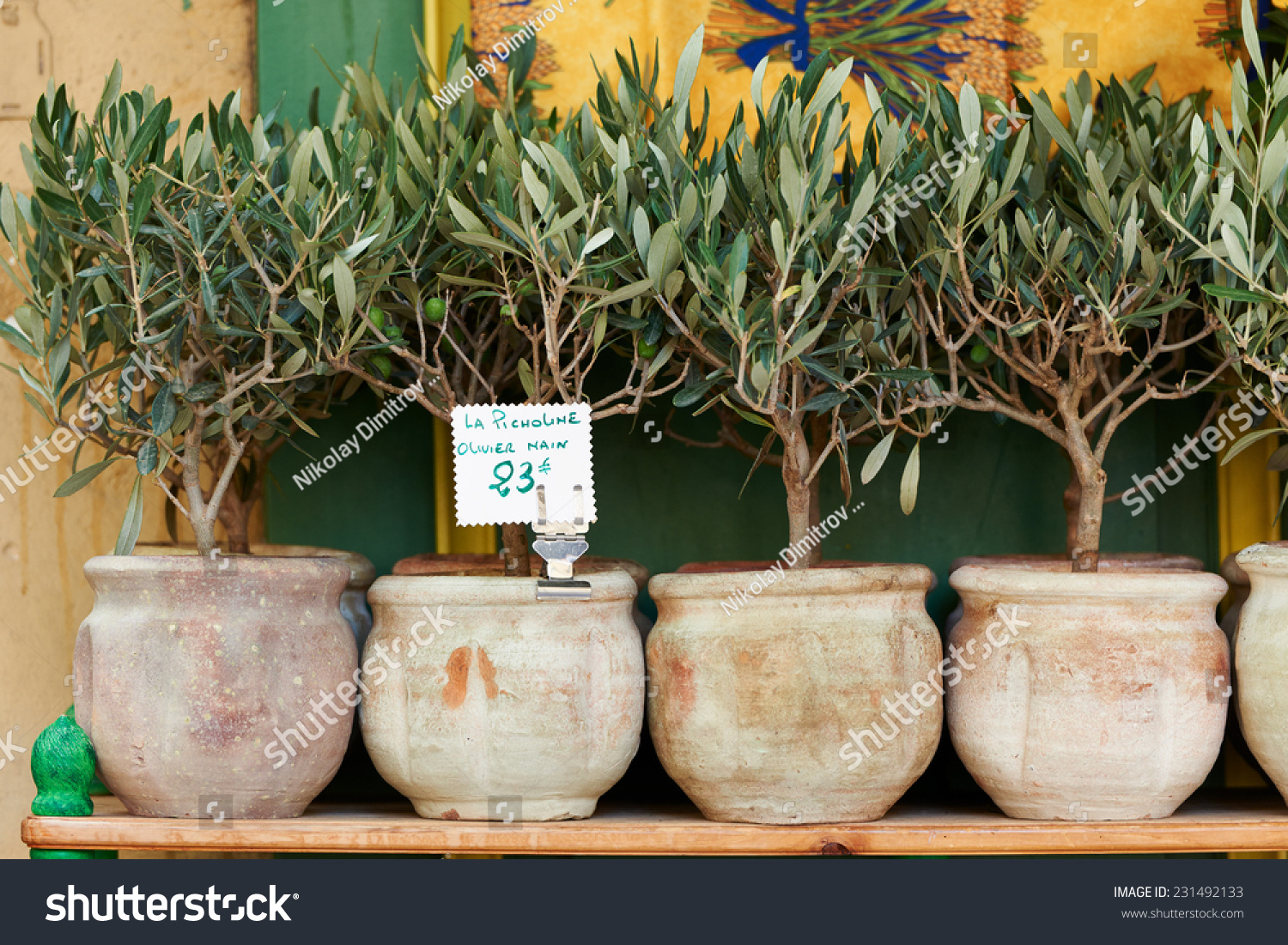
Small Olive Trees Pots Bonsai Plants Stock Photo (Edit Now) 231492133
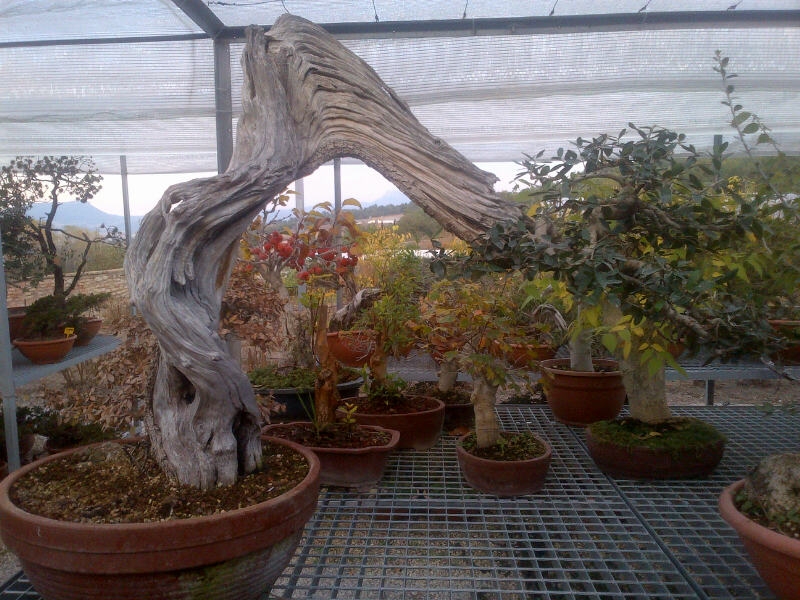
The Olive Tree as Bonsai

Types of Bonsai Trees | Bonsai Tree Gardener
Flowering and Fruiting Arbequina Olive Bonsai Tree "S" Shaped Trunk(arbequina)

Stunning Olive bonsai tree with hollowed trunk features for sale in the UK.
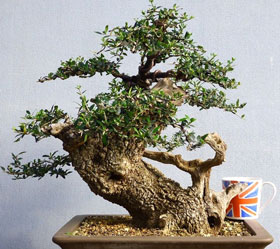
Dwarf Black Olive Bonsai Tree - bonsai tree

China Indoor Home Decoration Artificial Plant Tree Bonsai Wholesale Artificial Olive Tree on Sale - China Artificial Olive Tree and Artificial Bonsai Plant Tree price

Large Olive Tree Bonsai (Page 1) - Line.17QQ.com

Old Fruiting Olive Tree, Bonsai Tree,,, SALE | eBay
Giant Bonsai Olive Tree | El Angol Nursery | Sale giant olive bonsai, olive bonsai macro, growing plants and trees, retail and wholesale
Wf-bs165 Artificial Plant Bonsai Olive Tree - Buy Bonsai Tree Plant Plastic Tree,Artificial Bonsai Trees For Sale,Home Artificial Bonsai Tree Product on Alibaba.com
Bonsai olive tree size (girth 140 to 210 cm / height 240 to 280 cm)

Small Bonsai Olive Trees Potted Plants Stock Photo (Edit Now) 1024502941

PalmFarm Catalogue - Olive Trees for sale in Spain, in Europe and Internationally from PalmFarm in Spain

Dwarf Black Olive – Bucida Molinetti – 8″ Pot – Wigert's Bonsai

Got a black olive available. | Bonsai Nut

Amazon.com : Indoorbonsaiexotics Dwarf Black Olive Bonsai Tree : Grocery & Gourmet Food
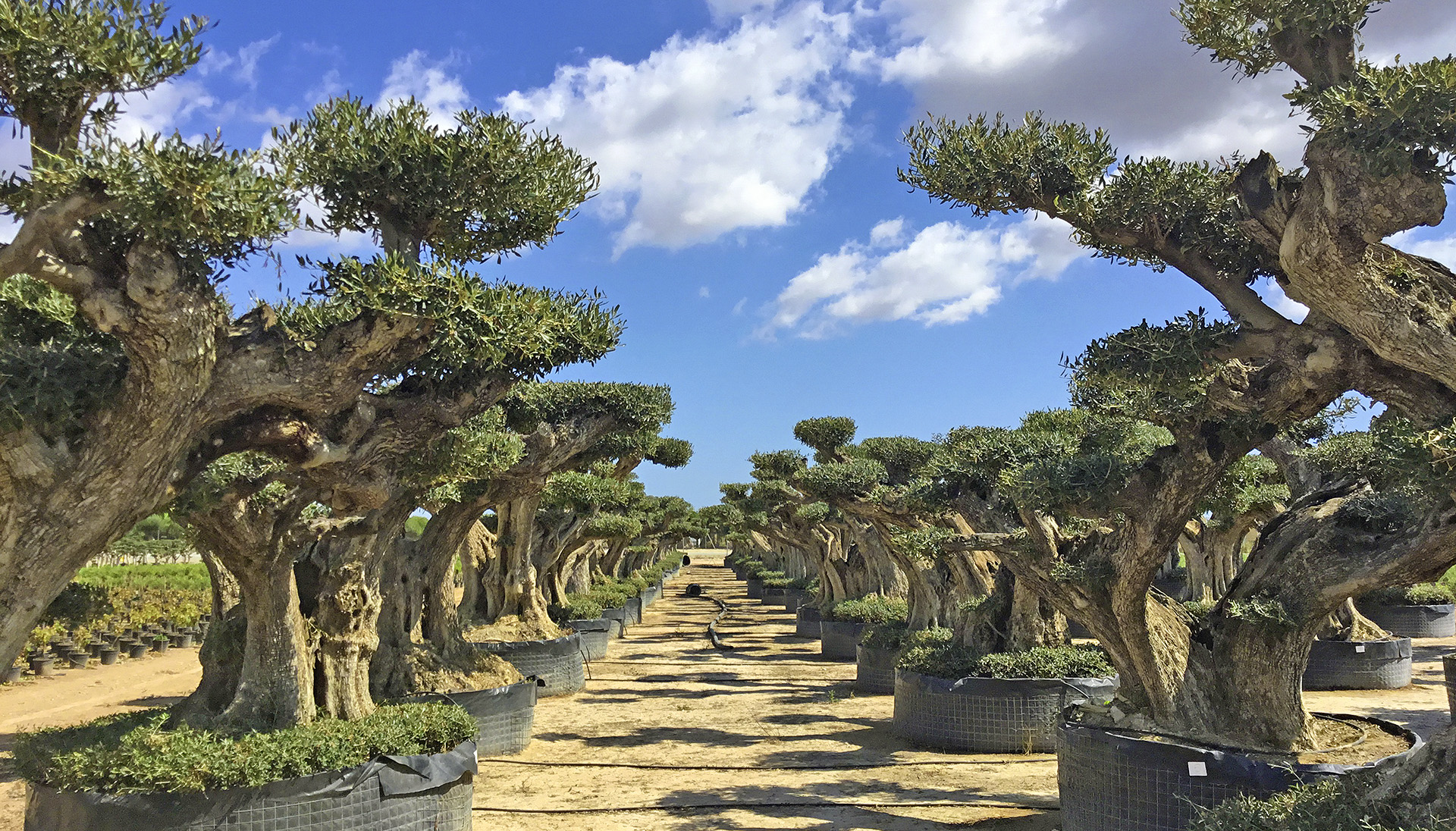
Spanish olive Trees for sale-buy an olive tree in Spain-Finca Hermosa

Ancient Old Olive Trees for Sale UK. Buy Online UK & IRL | Olive trees for sale, Olive tree bonsai, Bonsai trees for sale

Nordic ins artificial olive tree fake tree greenery bonsai living room decoration indoor potted plants fake plants with pot|Artificial Plants| - AliExpress

5PCS bonsai Olive Bonsai tree (Olea Europaea) Seeds, Bonsai Mini Olive Tree, Olive Bonsai Fresh Exotic Tree Canarium album Seeds- Buy Online in Singapore at desertcart.sg. ProductId : 52112234.
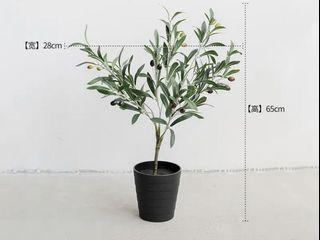
olive tree | Gardening | Carousell Singapore
Posting Komentar untuk "olive tree bonsai for sale"